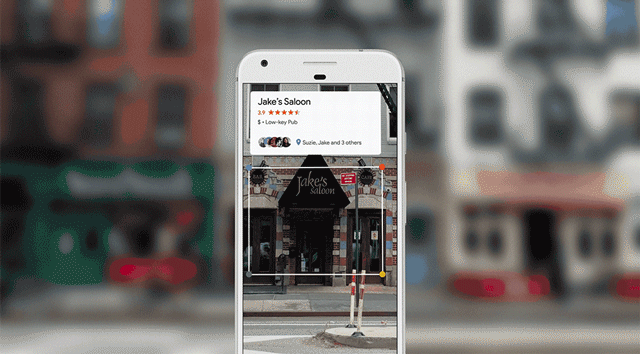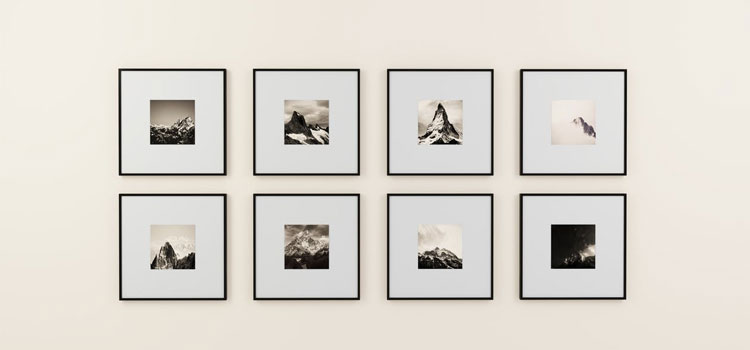In the past, Google bots only recognized text, even for its Image Search, which is why the responsibility of adding alt text, image description, meta tags, SEO-friendly file names, and creating image sitemaps fell on the shoulders of the website owner. Today, this has changed quite dramatically thanks to technological innovations such as image recognition (CamFind), reverse image search (TinEye), and more.
- Inbox Dollars - Get paid to check your email. $5 bonus just for signing up!
- Survey Junkie - The #1 survey site that doesn't suck. Short surveys, high payouts, simply the best.
- Nielsen - Download their app and get paid $50!
Although Google has tried to make worthy changes in visual search, from its Google Goggles in 2010 and its own reverse image search in 2011, it was only within the last year that we saw product images and details launched on search results, similar item recommendations and style ideas.
Despite Google’s continuous development of its visual search technology, the search engine giant isn’t the one leading this particular innovation (for now). It’s interesting, really. Particularly since Pinterest and Bing have been aggresively developing their modern visual search modes for the past year, ahead of Google’s announcement of its mobile-based image search Google Lens in mid-2017.

But you know Google is deep in development in this space, since its own company DeepMind (under the Google banner) is at the forefront of visual search innovation. Google Lens will reportedly be linked to both Google search and Google Maps.
What is Visual Search Exactly?
Visual search has been around for many years, but it had relied on text-based query to find the best picture to match the user’s request. With the modern visual search, everything will be based on images (you input an image, you get images as output) thanks to complicated algorithms, a combination of schema and multi-step networks that rely on patterns to identify images.
The technology has been hard to incorporate into search engine algorithms, simply because unlike the human brain, machines require multiple tests in order to identify objects based on size, color, shape, and other factors. There’s no human intervention with visual search (no human assisting the machine which factor to prioritize when identifying objects), which is why Google, Bing, and other leaders in this field have been mastering their version for quite a while now.
Facebook has used some kind of visual search technology with its tagging feature, which is why it could recognize a friend’s face immediately when you upload a photo. But it can still fall short sometimes.
In terms of accuracy of visual search results, Pinterest Lens has been making impressive progress with its app’s newest tools and partnerships from ShopStyle, Refinery29, Olapic, Curalate and Project September. By uploading a picture, users can now “shop the look” straight off Pinterest from brands like Target, Macy’s, Amazon and more.
Bing is also making a bit of noise in this space since it relaunched its visual search in July 2017. It’s available on desktop and provides accurate object recognition. Plus, Bing is open to advertisers using its visual search for product placement.
Visual search in 2018 will continue, as companies strive to bring user experience to the next level. And while huge companies like Google and Bing works on becoming the go-to visually-focused search engine, anyone with a website should take notice and find a way to get in on this trend.
2018 SEO Strategy for Visually-Focused Content
For ecommerce websites, it is now the best time to work on rich visuals and engaging content. But beyond adding photos to your site, you’ll need to optimize these visually-focused contents for SEO and reap the rewards in 2018. How do you do it?
First, you need to understand that like text-based search results, visual search results are also algorithmically ranked, which means an authoritative site that features the particular product being searched will rank higher than other sites. Of course, Google may also prioritize a particular product type over others when ranking for visual search.
If you’re selling a product online, working on SEO for visual search should be your priority. Even if visual search on Google, Bing, Pinterest and other search engines are still being improved, you can already work on these 10 things:
1) Don’t forget Meta Data Description
Meta data goes beyond a proper image file name. It should also include important keywords and additional relevant details, such as price, availability, currency, and more. Since search engines are still going to give you some points with a complete meta data description of your images, there’s no harm in going through this tried-and-tested SEO technique.
2) Post Tags and Keywords Help with Visual Search
With proper keyword research, you’ll be able to use keywords throughout your site not only to help with regular web search results, but also with visual search. Aside from squeezing in keywords into a photo’s meta data, you should also incorporate them on post tags. Don’t forget to use synonyms and similar phrases that your target audience may be using for search.
3) Continue Adding Alt Text and Captions
Alt text tags (HTML codes included in image descriptions) that help search engines with “understanding” what a picture contains. Captions provide the specifics (names of people, locations, brands, and so on). Both alt text tags and captions also help visually-impaired users who may be using screen readers to search through your site.
4) Go for High-quality and Appropriately-sized Photos
Make sure you seek balance when re-sizing your photos. Make it too big, which can affect your page load speed. Make it too small, but it could prevent search engine bots to recognize patterns and shapes. Finding the right balance will help your photos rank on search engines. This is also a good SEO practice in general.
When it comes to picture quality, experts like MarketGoo marketing manager Larissa Murillo advises on keeping pictures simple without noisy backgrounds. Avoid blurry subjects, focus on products (if you’re selling a product), and use all-white background whenever appropriate. This is because visual search algorithm is increasingly capable of “recognizing” shapes based on an object’s edges and categorizes this object into similarly-shaped objects. Keeping your photos clean help search engines determine your photos’ content.
5) Photo Placement is also important
You may have added meta data, keywords, and alt-text tags successfully, but if this isn’t enough to rank your photos, you could check photo placement throughout your site. When you place a photo near text that describes that particular photo, it helps search engines identify additional details about the photo.
For example, your photo of a Lenovo tablet has the proper Lenovo-modelnumber-tablet.jpg file name with captions and meta data description. But if you placed it near your content that describes the size as “small,” color as “yellow,” or category as “kid-friendly,” your photo might be selected as one of visual search results for those looking for a kid-friendly yellow Lenovo tablet.
6) Implement Schema markup properly
If you want your product images featured on visual search results, you have to make sure that schema markup is properly implemented. This pertains to file category related to your site, may it be for products, recipes, thumbnail images of videos, or any other multimedia content.
You can check if you’ve implemented it successfully and included SEO-friendly information with Google’s Structured Data Testing Tool. Note that depending on the search engine, it could take about a week for bots to crawl a particular site. In addition, creating a schema markup doesn’t guarantee that your items will be displayed on visual search results. But Google does give you credit if you’ve implemented a quality markup.
No joke. Here are the fastest ways to make easy money online. Click here to see how.
There’s another way to check if Google has indexed your images. You can perform a YourSite.com query on your mobile browser (mobile should be your priority instead of desktop) and see if images included in your markup appears on the results. If not, you might have implementation issues and need to repeat the process.
7) Take Advantage of Google Maps and Geo-tagging
Geo-tagging your images based on a particular location can provide users performing local searches with relevant query results. Google and Pinterest both have search engines that can filter out results based on location. While this may not be appropriate for every picture, it’s beneficial to include it with your site’s “photo guidelines” for instances where it fits.
Those with brick-and-mortar stores should also take advantage of Google Maps and pin their locations on the platform. Upload relevant photos and list down company information, contact numbers, and other important details as well.
8) Infographics are the most shareable multimedia content
The best thing about creating infographics is that people love this kind of content. They love it so much that if your infographic ends up in the visual search results, there a good chance that they’ll visit your site for more. Which means you’ll have more visitors and possibility of a sale.
9) Add Open Graph Tags on Your Images
The open graph tag is an HTML code that lets you control how your content is shared on social media platforms like Facebook, Twitter, Google+ and other websites. Adding this tag creates a dedicated image, which ensures that your chosen image will be featured whenever someone shares your content on third-party sites.
10) Pinterest Isn’t Just For Personal Use
Don’t leave Pinterest out of the picture of your SEO efforts. What used to be a platform for hobbyists to pin their dream homes, craft projects, recipes, and other to-do lists, Pinterest has now been turned into an image-centric platform where businesses can post their entire product inventory without charge. And reap SEO juice from it.
The most interesting tidbit about adding photos on Pinterest is that the social media network has one of the most advanced visual search programs today.
The Bottom Line
The future of visual search is here and the applications to them in the ecommerce world are far and promising. Search engines may not have perfected the algorithms yet, but you can be sure that Google, Bing, Pinterest, and other sites will crack it soon. It wouldn’t harm you to get ahead with the SEO planning and testing to give your photos a real chance at ranking on visually-focused search results.






Wow ! Everyone trying to visible in SERP.
Great visual for SERP, Is this feature available for the search engine. You have introduced great tips which everyone wants to get this features for their blog and websites.